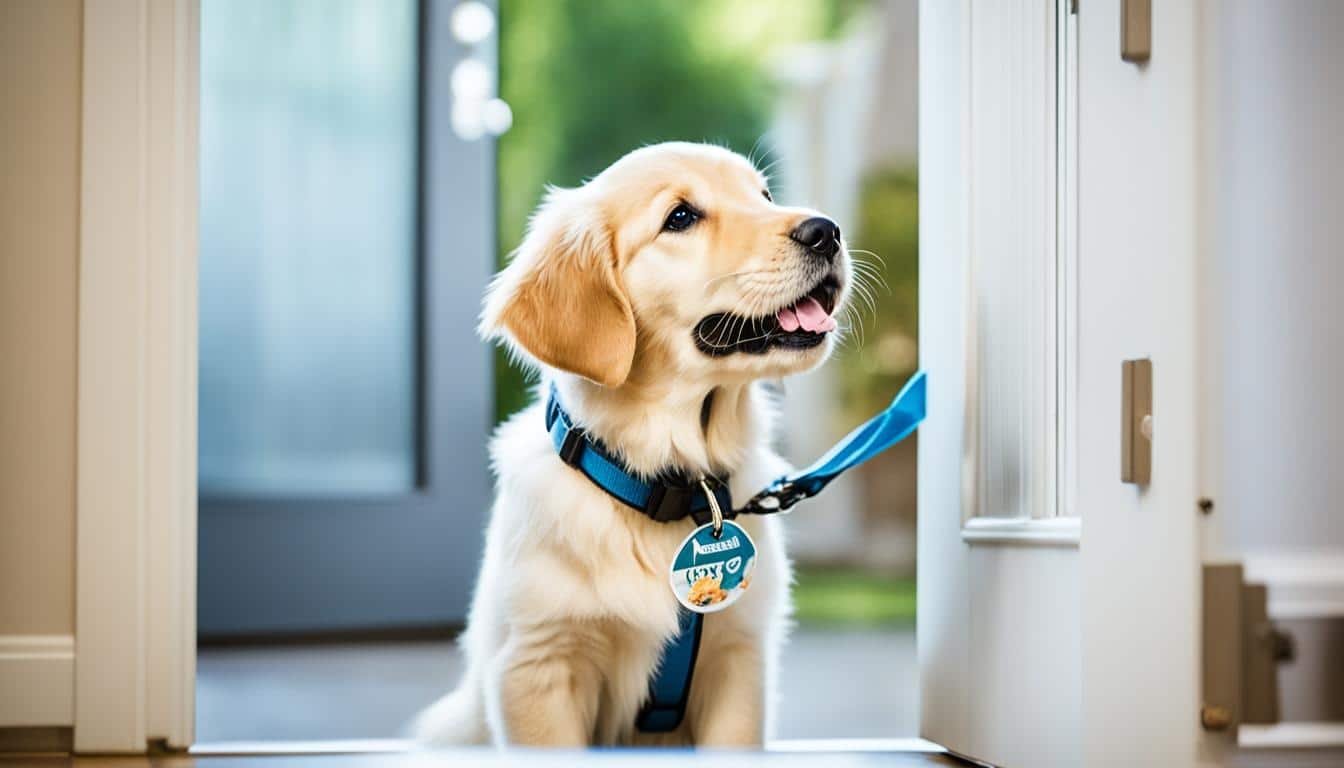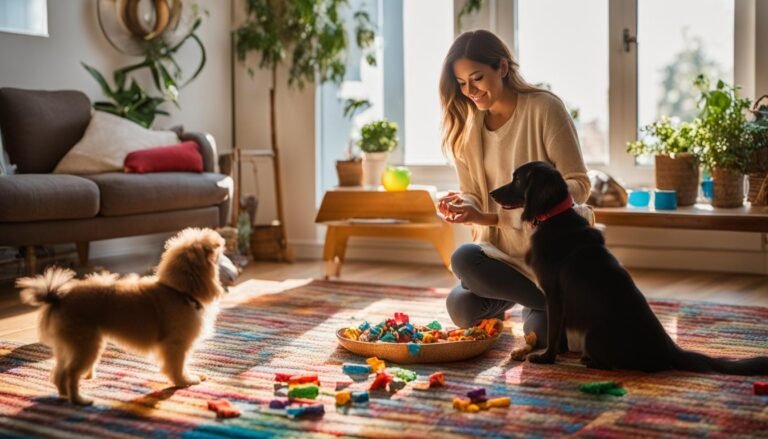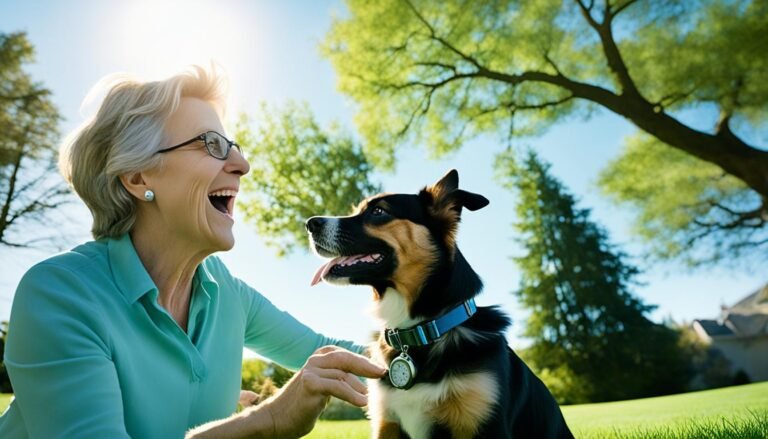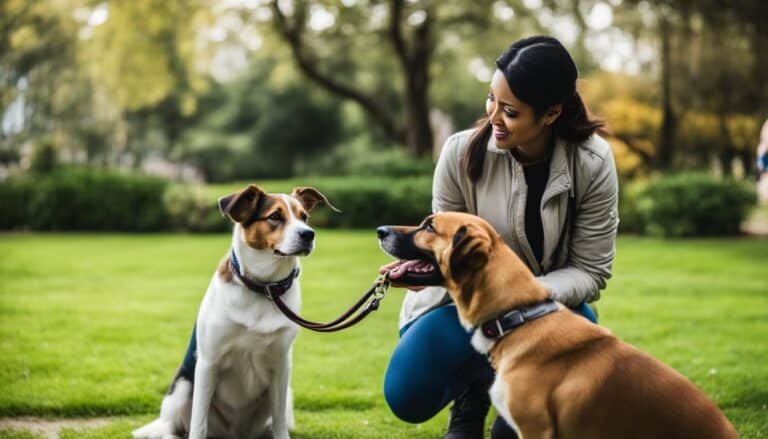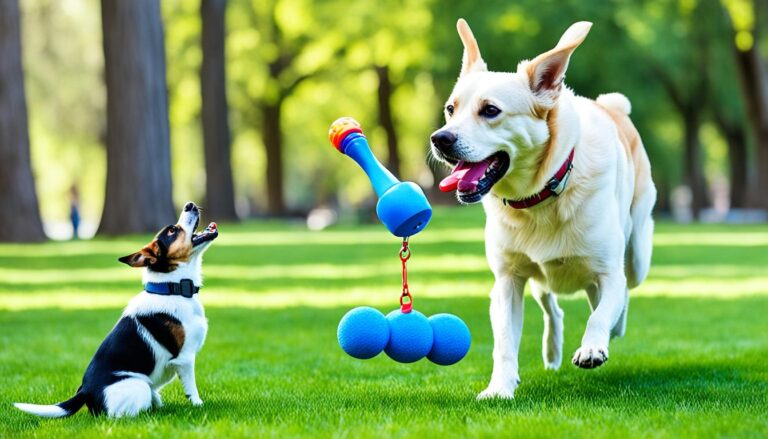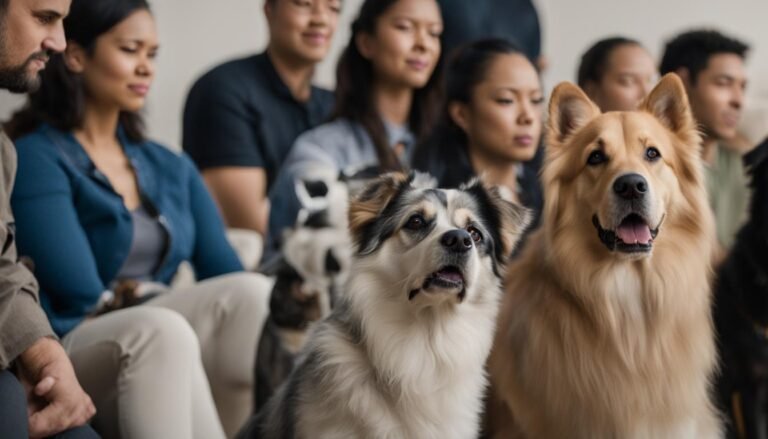How to Train a Dog to Go Outside
Meet Max, a lovable and energetic Labrador Retriever. Max’s owner, Lisa, recently brought him home as a new addition to their family. However, she quickly realized that Max needed some help withpotty training. Every morning, Lisa woke up to find accidents around the house, and she knew it was time to tackle the challenge ofhousebreaking Max.
Lisa understood that training Max to go outside required patience, commitment, and consistency. She embarked on a journey to establish a routine that would help Max learn where to go for his potty needs. Armed with determination, Lisa started researching effectivehow to train a dog to go outside techniques.
As she delved into her research, Lisa learned some crucial steps to follow. She discovered that establishing a regular schedule was key, as puppies like Max thrive on consistency. Lisa started taking Maxoutside frequently, especially after he woke up, played, ate, or drank.Rewarding Max every time he eliminated outdoors was an important part of the training process.
With each passing day, Lisa diligently stuck to their routine and noticed gradual progress. Max began to understand that going outside was the preferred place for him to do his business. The bond between Lisa and Max grew stronger as they worked together onpotty training Max to go outside.
Now, Lisa wants to share her success story with you. In the following sections, we will explore various techniques and strategies to help youteach your dog to ask to go out, whether you have a puppy or an adult dog. So get ready to dive into the world of dog training and turn your furry friend into a pro at doing their business outdoors!
Teaching Your Dog to Ask to Go Out
Communication is vital in any relationship, including with our pets. Teaching your dog to ask to go out is possible through training. Look for signs such as sniffing, circling, whining, or pacing, which may indicate that your dog needs to go outside.
Establishing a routine for your dog’s potty breaks is essential. Take your dog out at the same times every day, such as after meals or before bedtime. Consistency will help them understand the expectation.
Using classical conditioning techniques can also help teach your dog to ask to go out. One popular method involves training your dog to ring a bell when they need to go outside. Hang a bell by the door and teach your dog to nudge it with their nose or paw. Each time they successfully ring the bell and go outside, reward them with praise and a treat. With repetition, your dog will learn to associate the bell with going outside to potty.
Incorporating positive reinforcement during this training process will motivate your dog to continue this behavior. Remember to praise and reward your dog every time they ask to go out and eliminate outdoors. Positive reinforcement strengthens the association between the desired behavior and the reward, making it more likely to be repeated.
By teaching your dog to ask to go out, you’re improving communication and preventing accidents indoors. Training takes time and patience, so be consistent and celebrate your dog’s progress along the way.
Summary:
- Look for signs such as sniffing, circling, whining, or pacing
- Establish a routine for your dog’s potty breaks
- Use classical conditioning techniques like bell training
- Employ positive reinforcement to motivate your dog
- Be consistent and patient throughout the training process
Starting from Scratch with an Adult Dog
When adopting an adult dog, it’s important to start from scratch with housetraining. Establishing a routine is key to success. Taking your dog out at the same times every day helps them adapt to a consistent schedule and understand proper behavior.
To begin, praise your dog when they eliminate outdoors. This positive reinforcement reinforces the idea that going outside is the desired behavior. It’s also helpful to choose a specific location for your dog to go, as this can aid in their understanding and consistency.
Supervision is crucial when housetraining an adult dog. Confine them to a small area when you can’t directly watch them to prevent accidents. This allows you to closely monitor their behavior and reduce the chance of indoor accidents occurring.
- If accidents happen, it’s important to interrupt the behavior. This can be done with a firm but gentle “no” or a noise that grabs their attention. Following the interruption, immediately take your dog outside to continue eliminating.
- Once your dog finishes eliminating outdoors, be sure to praise them. Positive reinforcement reinforces the desired behavior and helps them understand what is expected of them.
It’s crucial to avoid punishment when housetraining your adult dog. Punishment can lead to fear and anxiety, which can hinder the training process and damage the bond between you and your dog. Instead, focus on positive reinforcement and consistency.
Properly cleaning up soiled areas is also important. Use enzymatic cleaners designed specifically for pet messes to eliminate any lingering odors. This helps deter your dog from returning to the same spot.
Remember, housetraining an adult dog may take time and patience. Consistency, positive reinforcement, and a routine will help your dog learn and adapt to the desired behavior of going outside to eliminate.
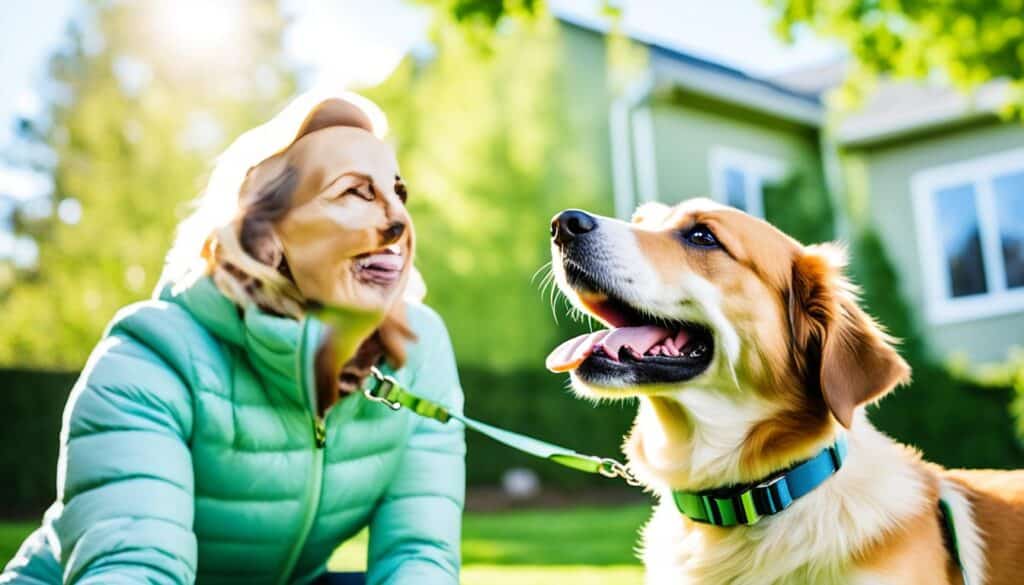
Dealing with House Soiling Problems
Despite following proper housetraining procedures, some dogs may continue to have accidents in the house. This can be frustrating for both you and your furry friend. However, it’s essential to understand that there could be underlying reasons behind their behavior.
Several factors can contribute to house soiling problems in dogs, including medical issues, submissive or excitement urination, territorial marking, separation anxiety, or fears and phobias. Therefore, it’s crucial to consult with a veterinarian to rule out any potential health problems.
Once medical issues have been ruled out, addressing house soiling problems may require additional training techniques and behavior modification strategies. Consistency is key in reinforcing proper elimination habits. Be patient with your dog during this process, as it may take time for them to learn and adjust.
Avoid punishment as it can create fear or anxiety, which can worsen the problem. Instead, focus on positive reinforcement by rewarding your dog for going outside to eliminate. Use treats, praise, and affectionate gestures to motivate and encourage them.
Consider implementing a strict routine for bathroom breaks and ensure your dog has ample opportunities to go outside. Limit access to areas where they frequently soil and supervise them closely indoors.
Remember, house soiling problems can be frustrating, but with consistent training, patience, and avoidance of punishment, you can help your dog break this unwanted habit.
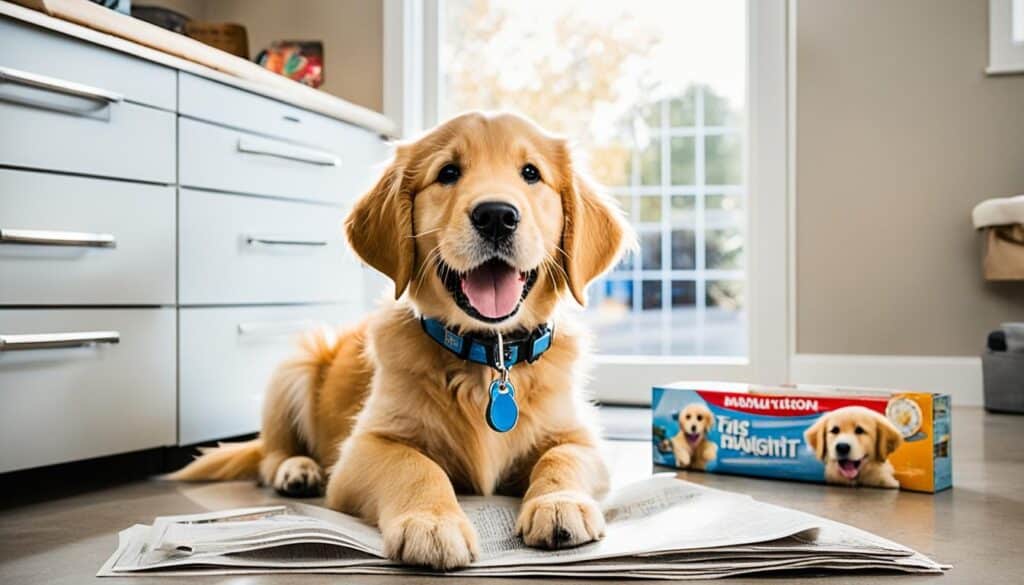
Final Tips and Considerations
As you embark on the journey of training your dog to go outside, there are a few important tips and considerations to bear in mind. Firstly, avoid using pee pads indoors as they can confuse your dog and hinder the housebreaking process. Instead, focus on consistently reinforcing the behavior of going outside.
Consistency is key when training your dog. Stick to a regular routine and take your dog out at the same times each day. This helps them establish a pattern and understand when it’s time to go outside. Pair this with positive reinforcement, such as treats and praise when they eliminate outdoors, to further encourage the desired behavior.
It’s essential to be patient and understand that accidents may occur during the training process. Your dog is learning a new habit, and it takes time for them to fully grasp the concept of going outside. Stay consistent in your approach, and don’t get discouraged by the occasional mishap.
Remember, with time, consistency, and the right training techniques, you can successfully train your dog to go outside for potty time. By avoiding pee pads, maintaining consistency, and using positive reinforcement, you’ll be well on your way to a well-behaved and house-trained furry companion.
